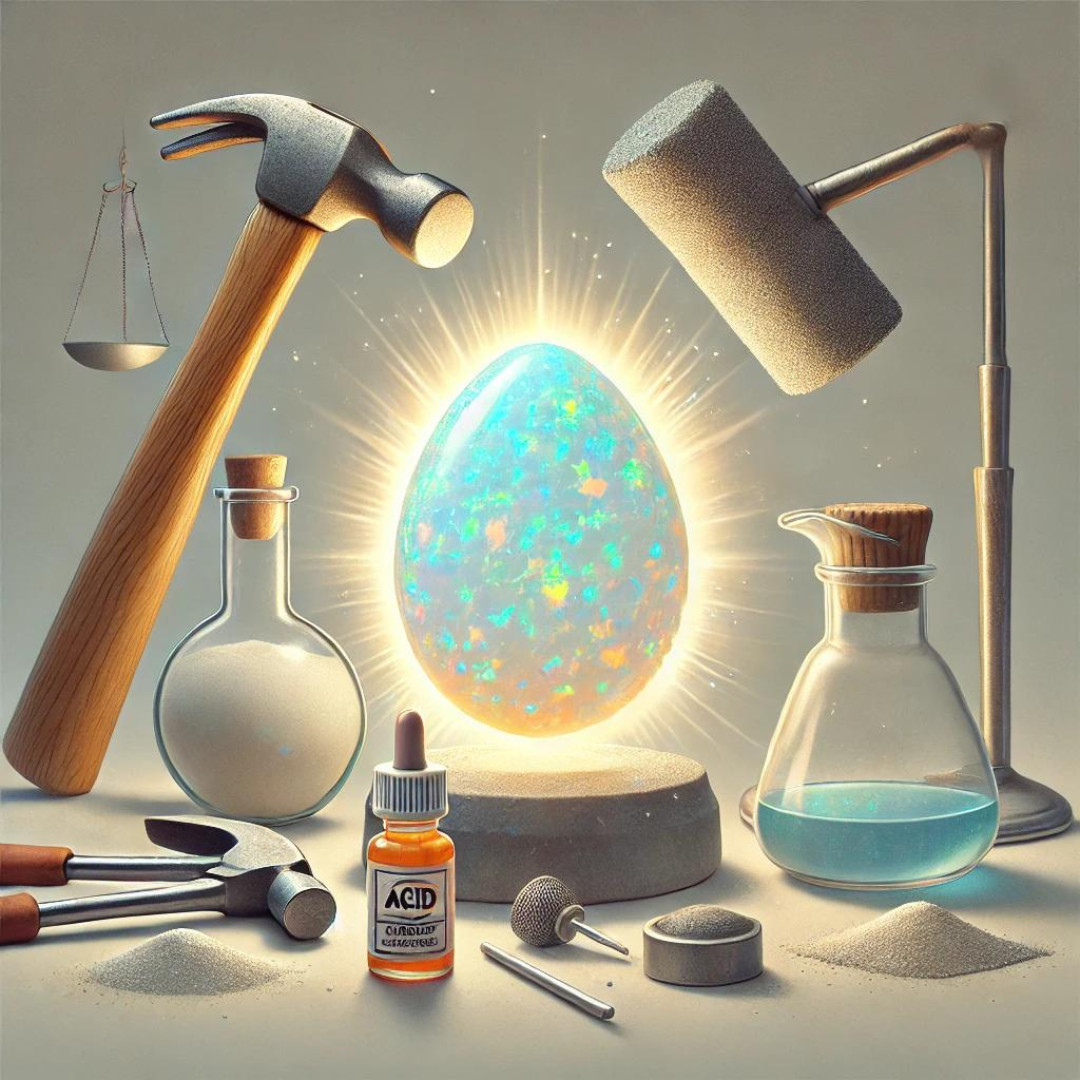
What are opals?
The fascinating world of a unique gemstone
Opals are among the most fascinating gemstones, which inspire with their unique play of colors and mysterious structure. In this article, we focus on the material, physical and light properties of the opal that make it so extraordinary. We explain how the light interacts in an amazing way within the opal to create the dazzling play of colors and shed light on the fascinating material structure of this gemstone.

The Material Structure of Opals: A Game of Physics
Opals are made up of tiny spheres of silicon dioxide arranged in an orderly pattern. These spheres, which are only about 150 to 300 nanometers in size (a nanometer is a millionth of a millimeter), refract and scatter light into all the colors of the spectrum, similar to the phenomenon of a rainbow. For comparison: a human hair is about 80,000 to 100,000 nanometers thick - this means that thousands of these silicon dioxide spheres would fit next to each other in one hair. These tiny spheres are the building blocks of the opal's fascinating play of colors.
The play of colors of the opal is created when light hits these tiny spheres and is split into its spectral colors by the phenomena of diffraction and interference :
- Diffraction : Occurs when light waves hit the spherical particles and are scattered in different directions. This scattering causes the light to split into its different color components.
- Interference : The different light waves overlap and amplify or weaken each other, creating the colorful spectrum seen on the surface of the opal.
Depending on the size of the silicon dioxide spheres, different colors appear. Smaller spheres produce more bluish tones, while larger spheres produce warmer colors such as red and orange. This play of colors dancing on the surface of the stone gives the opal its unique character. The refractive index of opals is between 1.37 and 1.52. The refractive index indicates how strongly the light is refracted inside the stone.
Despite this ordered structure of the silicon dioxide spheres at a microscopic level, the opal as a whole is amorphous . This means that it does not have an ordered crystal structure like many other gemstones, but rather an irregular arrangement of atoms and molecules. This amorphous structure gives the opal its characteristic softness and makes it susceptible to scratches and cracks. In addition, the opal contains a water content of up to 20%, which is crucial for its stability and the vibrant play of colors.

resilient
Opals have a Mohs hardness of about 5.5 to 6.5 on the Mohs scale. This scale measures the scratch resistance of minerals. For comparison, diamonds, the hardest natural minerals, have a Mohs hardness of 10, while rubies and sapphires are at 9. Although opals are softer than these harder gemstones, they are still sturdy enough to be worn on a daily basis. However, it is advisable to treat them with care to avoid scratches, especially with frequent wear. With proper care, your opal jewelry will remain radiantly beautiful and suitable for everyday wear for many years. To the article .

Why do some opals show colors and others don't?
Opals can be divided into two main categories: common (non-precious) opals and noble opals . The difference lies in the arrangement of the silicon dioxide spheres. In noble opals, these spheres are arranged in an orderly pattern, which refracts the light and creates the characteristic play of colors. Within the noble opals, there are many different types, each with its own unique character. Examples of these are boulder opals or black opals. Common opals, on the other hand, have an irregular structure and therefore do not show any play of colors.
Here you will find an overview of the different types of opal and their origin.
You might also be interested in
Opal jewelry from FAERELLI
Experience the timeless elegance of FAERELLI opal jewelry. Our collections combine the fascinating beauty of opals with exquisite design and masterful craftsmanship. Discover how these unique gemstones are brought to life in stunning pieces of jewelry.
FAERELLI Opal jewelryKnowledge about Opals
Discover the fascinating world of opals - from their origins and the different types of opal to the mining techniques, how they are processed and the history of opals. Find out what makes opal jewelry so special and why these gemstones are among the most beautiful in the world.
About Opals










